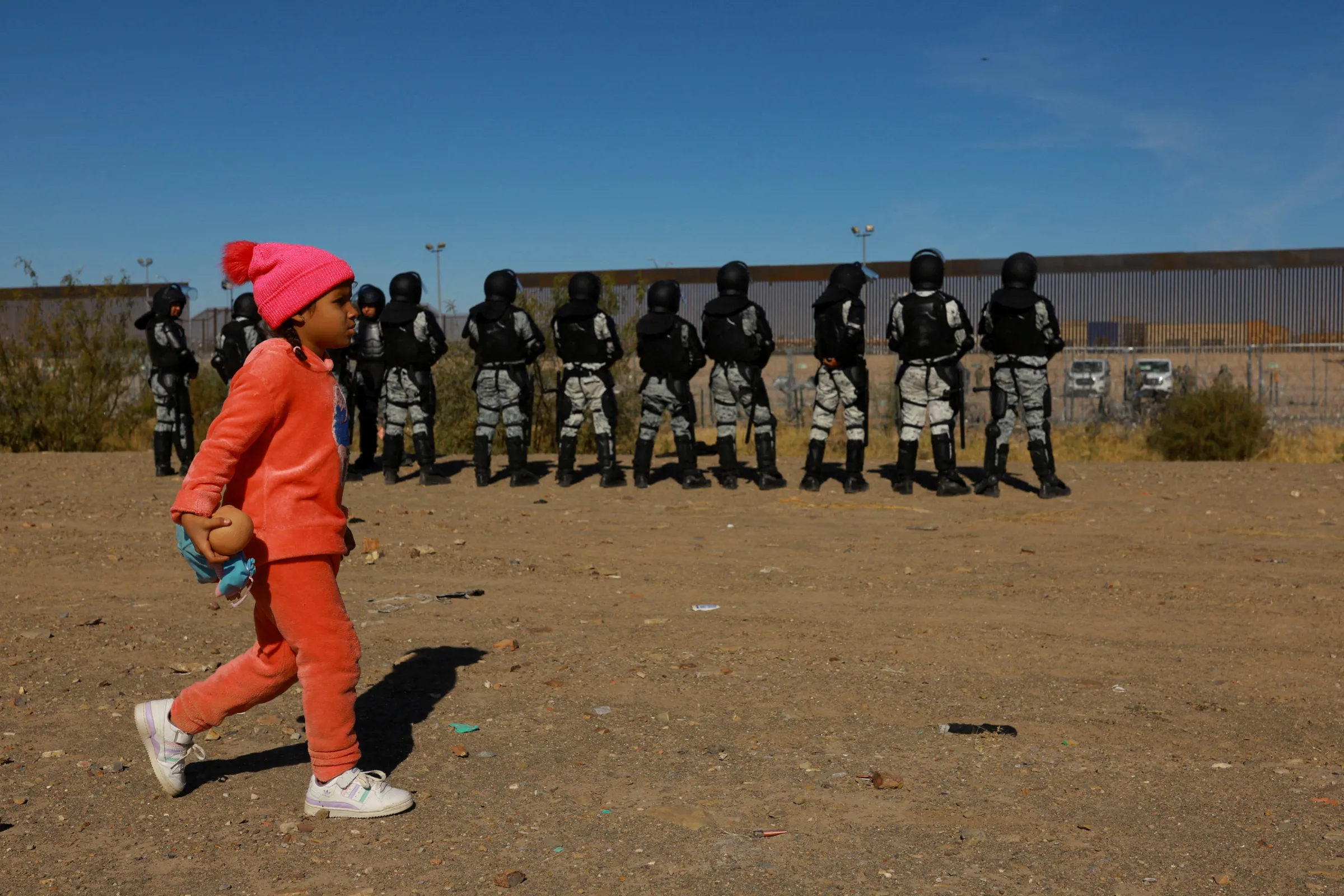Context is powered by the Thomson Reuters Foundation Newsroom.
Our Standards: Thomson Reuters Trust Principles

A migrant girl seeking asylum in the United States walks in front of members of the Mexican National Guard in Ciudad Juarez, Mexico December 18, 2024. REUTERS/Jose Luis Gonzalez
Under pressure from the U.S. government, Mexico steps up enforcement policies to prevent migrants from reaching the U.S.-Mexico border
MEXICO CITY - While U.S. President Donald Trump has threatened Mexico with tariffs to stop the flow of undocumented migrants to the United States, data shows that Mexico has already been enacting a tough crackdown on migration for more than a year.
On February 1, Trump agreed to a 30-day pause on a 25% additional tariff on imports from Mexico in return for 10,000 members of the Mexican National Guard to stem the flow of illegal migration and drugs in the country's northern border.
The Trump administration has also said it would reinstate the "remain in Mexico" programme that forces non-Mexican asylum seekers to wait in Mexico for the resolution of their cases.
Data shows that since 2023 Mexico has intercepted a record number of migrants while also detaining and transporting migrants around the country in a strategy meant to tire them out, experts told Context.
Here's how Mexico has been cracking down on migration:
Containing migrants within Mexico's borders has fallen largely on the country's military, National Guard and National Migration Institute (INM).
The military's involvement came into full force in 2023, with nearly 15,000 federal and state forces deployed at 301 checkpoints along Mexico's southern and northern borders, according to government data.
The checkpoints are meant to detect and stop migrants along highways, at train and bus stations and near migrant shelters as people head north to the United States.
Migrant caravans leaving from Mexico's southern border, which usually gather hundreds of people travelling by foot to the U.S. border, are being disbanded by Mexican officials.
From January to August 2024, migration authorities intercepted more than 950,000 undocumented migrants in the country, 132% more than in the same period the previous year.
This was the highest number of encounters recorded in 10 years, according to Context analysis of government data.
Mexico also received 182,258 asylum requests between January 2023 and June 2024 - a high number despite the temporary closure of the Mexican Refugee Commission offices in Mexico City.
Rather than deporting or arresting migrants, Mexico has turned to a "merry-go-round" strategy meant to wear down their resolve, according to Rafael Velásquez, Mexico director for the International Rescue Committee.
Detained migrants are transported by bus to different states in Mexico, particularly Chiapas and Tabasco in the south.
Once freed, they may restart their journey to the United States, but keep getting detained and transported back to the southern Mexican border.
"We know people who have been returned two, three times, and families that have been separated, with a parent sent to a different state while the rest of the family continues their journey," said Velásquez.
The strategy is forcing migrants to seek circuitous and more dangerous routes and places them at greater risk of becoming victims of organised crime groups, said Camilo Vélez, operational deputy mission chief in Mexico and Central America for Doctors Without Borders.
Despite Trump's threats of mass deportations and a crackdown on undocumented migration, Mexico is planning to reduce its federal budget for migration in 2025.
For 2025, the INM and the Mexican Commission for Refugees will receive 1.7 billion pesos ($85 million) - 10% less than in 2024.
In his first days in office, Trump shut down the CBP One app that allowed people to schedule an appointment to present an asylum claim with the U.S. Customs and Border Protection (CBP) at the U.S.-Mexico border.
Mexican President Claudia Sheinbaum said her government was offering migrants transportation back to their countries of origin, or options to remain in Mexico under an asylum visa.
Migration experts have also called on the Mexican government to enact policies that create safer routes for migrants and encourage them to stay in Mexico rather than seek to enter the United States.
On Jan. 20, prior to Trump's inauguration, Sheinbaum introduced the "Mexico embraces you" initiative aimed at supporting Mexican migrants who are deported back to her country.
Deported Mexicans will be given a card with 2,000 pesos ($100) to pay for transportation back to their communities of origin and will be registered to receive social security benefits, access to public healthcare and housing credits.
In the first week of Trump's administration, Mexico received 4,094 deported Mexican and non-Mexican migrants, who have been interviewed to determine whether they faced discrimination or violence during their deportation process.
This article was updated on Feb 5, 2025, to include the latest developments.
(Reporting by Diana Baptista; Editing by Anastasia Moloney, Ellen Wulfhorst and Jon Hemming.)
Context is powered by the Thomson Reuters Foundation Newsroom.
Our Standards: Thomson Reuters Trust Principles